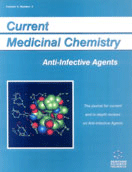Abstract
Sialic acids are characterized as ubiquitous sugar carboxylic acid with 9-carbon atoms as a backbone, often involved in important cell surface communications and infection processes. Modification of the functional groups attached on the sialic acid may lead to changes in steric and / or electronic properties of the molecule, which can be used to probe space and charge requirements of sialic acid-recognizing proteins. Among the diverse arrays of compounds related to sialic acid family, 2-deoxy-2, 3-didehydro sialic acids have been known as an inhibitor of sialidase from both bacterial and viral sources, occupying its important position in the modern medicinal chemistry. These core structures are also incorporated in the design of sialyltransferase inhibitors based on the transition state of the sialyl donor nucleotide. Focusing on our recent progress, this article reviews the basis and recent progress of the synthesis of 2-deoxy-2, 3- didehydro sialic acid analogs and their biological evaluation against various sialidases
 3
3

